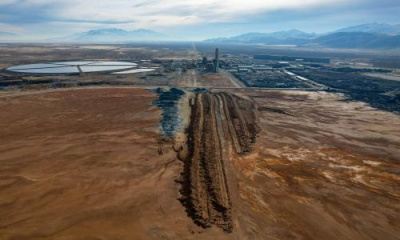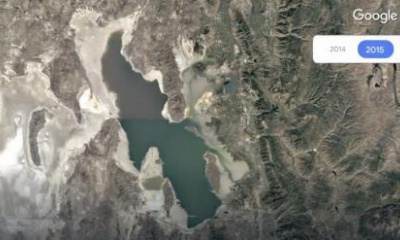SALT LAKE CITY — The Great Salt Lake is a big contributor to greenhouse gas emissions, according to a new study.
The Royal Ontario Museum in Canada published research that found emissions from the drying lake bed led to 4.1 million tons of carbon dioxide and other gases being released in 2020. The study's conclusions suggested that drying lake beds are an overlooked but significant source of greenhouse gases that may continue to increase due to climate change. It was published this week in the journal One Earth.
"Human-caused desiccation of Great Salt Lake is exposing huge areas of lake bed and releasing massive quantities of greenhouse gases into the atmosphere,” said Soren Brothers, who led the research, said in a statement put out by ROM. "The significance of lake desiccation as a driver of climate change needs to be addressed in greater detail and considered in climate change mitigation and watershed planning."
The research team, which included Utah State University, measured carbon dioxide and methane emissions from the exposed sediment from April to November 2020, and compared them to aquatic emissions estimates. The researchers' calculations suggested the dried lake bed emitted 4.1 million tons of greenhouse gases into the atmosphere. It was 94% carbon dioxide, which, the study determined, was about a 7% increase to Utah’s human-caused greenhouse gas emissions.
The study was conducted as the lake was nearing its lowest point in recorded history, which hit in 2022. The lake's declines have been attributed by experts to increased water diversion, drought and a changing climate. The lake has since risen about six-and-a-half feet thanks to a pair of strong winters. However, the Great Salt Lake remains about three feet below what is considered the start of a healthy ecological range.
The Royal Ontario Museum's study is the latest academic research that shows the impacts of a drying Great Salt Lake. Another Utah State University study found that a drying lake bed has the potential to create its own "lake effect drought" which impacts the entire Wasatch Front. A study by the University of Utah found that some communities along the lake are significantly impacted more than others by the dust blowing off the dried lake bed.
Recently, the Great Salt Lake Commissioner's Office — tasked with enacting a plan to save the lake and reverse its declines — convened a forum of scientists and state officials and came up with an action plan to deal with the dust problem. In addition to particulate matter, there are toxic minerals in the lake bed that could pose hazards to health including arsenic, cadmium, lead and copper.








